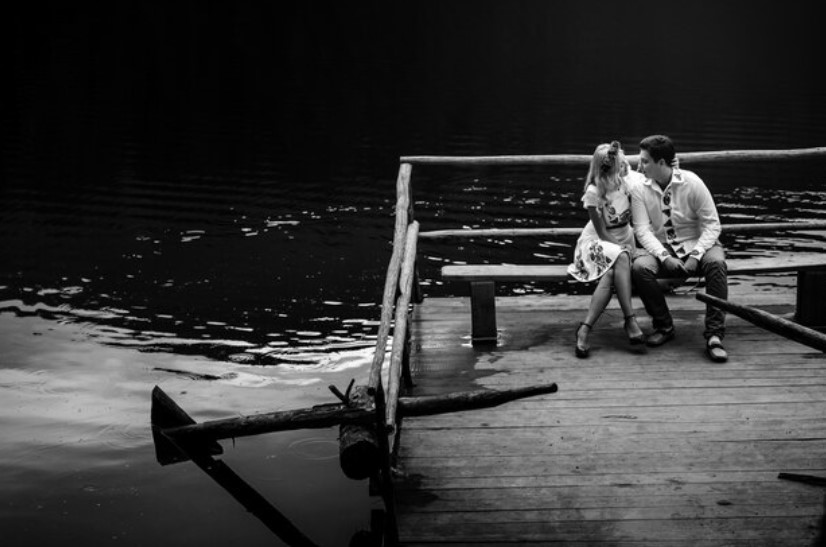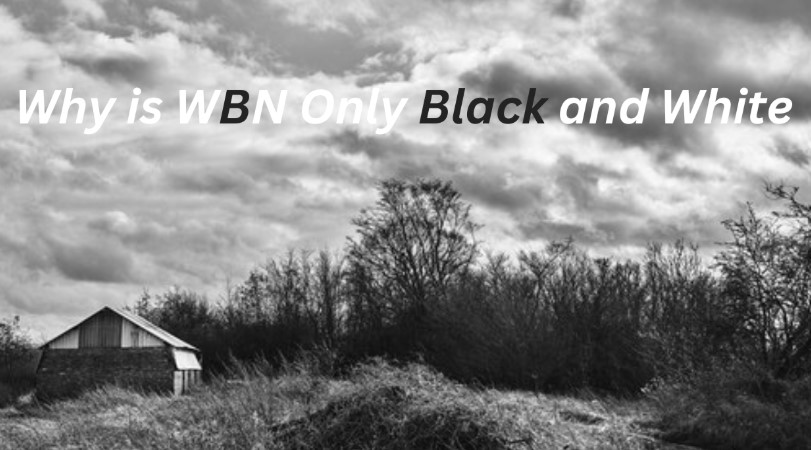Have you ever found yourself wondering, why is WBN only black and white? Whether you’re a Marvel fan, a horror enthusiast, or just a curious viewer, this artistic choice is one that sparks intrigue. WBN, short for Werewolf by Night, stands out in the Marvel Cinematic Universe (MCU) not just because of its horror elements but because of its striking monochrome presentation.
So, what’s the reasoning behind this bold stylistic decision? Let’s dive into the origins, historical significance, and creative intentions behind WBN’s black-and-white aesthetic.
Stay here more latest update: Homeworkify
The Creative Vision Behind WBN’s Monochrome Style
Marvel Studios’ Werewolf by Night debuted in 2022 as a special presentation, breaking away from the usual superhero formula. Instead of vivid CGI battles and colorful costumes, WBN embraced a haunting, classic horror look—leaving many fans wondering, why is WBN only black and white?
The decision wasn’t random. Marvel specifically designed WBN in black and white to evoke the eerie atmosphere of vintage horror films. This stylistic choice immerses viewers in a world reminiscent of early cinematic masterpieces like Dracula (1931) and Frankenstein (1931). By doing so, WBN honors the legacy of old-school horror while standing out as a unique and timeless entry in the MCU.
Table of Contents
Paying Tribute to Classic Horror Cinema
The use of black and white in WBN isn’t just a nostalgic gimmick—it’s a tribute to an era when horror movies thrived without the need for color. In the 1920s and 1930s, early horror films relied on high-contrast lighting, dramatic shadows, and eerie visuals to create suspense. Filmmakers of that time had no choice but to work in monochrome, but they mastered the art of visual storytelling through light and shadow.
By asking why is WBN only black and white, we uncover Marvel’s deep respect for cinematic history. The decision to go monochrome helps set the mood, amplifies the horror elements, and makes Werewolf by Night feel like a lost classic that has just resurfaced in the modern era.
The Role of Minimalism in WBN’s Design
Beyond nostalgia, black and white visuals have a strong connection to minimalism in design. Throughout history, black and white have been used to convey simplicity, clarity, and timelessness. From early Bauhaus posters to high-fashion photography, monochrome has always had a way of stripping away distractions and focusing attention on the subject.
In WBN, the lack of color intensifies the dramatic shadows, eerie settings, and horror-infused storytelling. This minimalist approach ensures that every detail—whether it’s the protagonist’s transformation or the ominous surroundings—feels more pronounced. In a world saturated with color-heavy superhero films, WBN’s black-and-white aesthetic makes it stand out as both artistic and bold.
The Psychological Impact of Black and White
Interestingly, black and white visuals can also have a psychological effect on viewers. Without color to guide emotional cues, the audience focuses more on contrasts, shapes, and textures. This enhances the suspense and mystery in WBN, making scenes feel more chilling and immersive.
When viewers ask, why is WBN only black and white, the answer extends beyond homage and design—it’s also about crafting a deeper emotional experience. The absence of color forces audiences to pay closer attention to the details, making each eerie moment more impactful.
Why WBN’s Black-and-White Style Works So Well
At its core, WBN’s monochrome aesthetic is a brilliant creative decision that serves multiple purposes:
- Honoring classic horror films – Paying tribute to the golden age of horror cinema.
- Enhancing suspense and mystery – The absence of color intensifies eerie visuals.
- Minimalist and timeless appeal – A design choice that feels both nostalgic and modern.
- Standing out in the Marvel Universe – A bold departure from Marvel’s usual vibrant style.
For fans who still ask, why is WBN only black and white, the answer lies in its deep connection to cinematic history, visual storytelling, and emotional engagement. By embracing this retro aesthetic, Werewolf by Night achieves something unique—blending old-school horror charm with modern filmmaking techniques.
Why Horror Feels Right in Black and White
When asking, why is WBN only black and white, the horror genre itself provides a key answer. Horror thrives on atmosphere, and few elements are as effective as high-contrast lighting, deep shadows, and eerie silhouettes—all of which are enhanced by a monochrome palette.
The Monochrome Advantage in Horror
- Amplified Suspense – Without color, the audience focuses more on the interplay of light and darkness, heightening tension and mystery.
- Timeless Aesthetic – Some of the most chilling horror films—Nosferatu (1922), Dracula (1931), and Psycho (1960)—achieved their terrifying impact through black and white cinematography. Werewolf by Night taps into this legacy.
- Unreal, Dreamlike Quality – Monochrome adds a sense of detachment from reality, making horror scenes feel even more surreal and nightmarish.
The deliberate black-and-white style in WBN enhances its eerie storytelling, making every shadow and movement even more unsettling.
Practical Reasons Behind WBN’s Black-and-White Choice
Beyond aesthetics and nostalgia, why is WBN only black and white from a practical standpoint? There are multiple filmmaking advantages to this decision.
1. Masking Special Effects Imperfections
In horror films, especially those involving supernatural creatures, practical and digital effects play a major role. However, even the best CGI or prosthetics can sometimes look unnatural in full color.
By opting for black and white, Werewolf by Night cleverly hides any flaws in creature design, making transformations and monster effects appear more seamless. This technique is commonly used in older films to create more convincing illusions.
2. Simplifying Cinematography and Lighting
Without the need to balance multiple colors, cinematographers can focus purely on contrast and composition. This makes it easier to craft striking visuals with deep shadows, high contrast, and eerie silhouettes—exactly what a horror movie needs.
In WBN, the black-and-white palette allows for dramatic lighting effects that wouldn’t be as effective in color. The result? A haunting, immersive atmosphere that perfectly complements the story.
Nostalgia and Storytelling: A Love Letter to Classic Cinema
For many fans, the black-and-white style of Werewolf by Night is more than just an artistic choice—it’s a nostalgic tribute to the golden age of horror. But why is WBN only black and white when most modern films rely on ultra-realistic visuals? The answer lies in the power of nostalgia.
By embracing the visual style of 1930s and 1940s horror classics, WBN transports viewers back to a time when storytelling relied on shadows, tension, and dramatic contrasts. This appeals not only to older audiences who appreciate classic cinema but also to younger viewers looking for something unique in a world dominated by CGI-heavy blockbusters.
Black and White as a Powerful Storytelling Tool
Setting the Mood
In filmmaking, color can be a powerful narrative device, but sometimes less is more. By stripping away color, WBN directs the viewer’s attention to the raw emotions of the characters and the eerie setting. The stark contrast between light and shadow intensifies the tension, keeping audiences on edge.
Black and white cinematography heightens the mystery and horror elements in WBN, making every flickering candle, looming shadow, and supernatural transformation feel more unsettling.
Enhancing the Themes of Duality
One of the most compelling answers to why is WBN only black and white lies in its thematic depth. The film explores ideas of transformation, morality, and identity—all of which are visually reinforced by the monochrome palette.
- Light vs. Dark – The contrast between black and white symbolizes the eternal struggle between good and evil.
- Human vs. Monster – The protagonist’s transformation from man to beast is amplified through the absence of color, making it feel more dramatic and primal.
- Old vs. New – The film pays homage to classic horror while bringing fresh storytelling elements to modern audiences.
This visual metaphor strengthens the emotional weight of the narrative, proving that black and white isn’t just an aesthetic choice—it’s an integral part of the storytelling.
Modern Filmmaking and the Revival of Black and White
Challenging the Norm in a Colorful World
In today’s era of high-definition, CGI-heavy productions, choosing a black-and-white style is a bold artistic decision. But why is WBN only black and white when most films opt for dazzling colors? The answer lies in its ability to break the mold and stand out.
Recent films like The Lighthouse (2019) and Mad Max: Fury Road – Black & Chrome Edition have demonstrated that monochrome visuals can still captivate modern audiences. Werewolf by Night follows this trend, using black and white not as a limitation but as a creative advantage.
The Nostalgic Appeal
For many viewers, WBN’s black-and-white aesthetic sparks nostalgia, transporting them back to the golden age of horror cinema. It’s a tribute to legendary films like Dracula (1931) and Frankenstein (1931), which relied on shadows and contrast to create suspense and fear.
At the same time, younger audiences see black and white as a refreshing break from oversaturated, effects-heavy blockbusters. This blend of nostalgia and innovation makes WBN unique in today’s entertainment landscape.
Practical and Technical Reasons for WBN’s Black-and-White Choice
Beyond artistic vision, why is WBN only black and white from a practical standpoint? There are several filmmaking advantages to this decision.
1. Hiding Special Effects Imperfections
Modern audiences have high expectations for visual effects, but practical makeup and CGI can sometimes look unnatural when shown in full color. Black and white helps smooth over imperfections, making supernatural creatures and transformations appear more realistic.
For example, a werewolf transformation—a staple of horror storytelling—can sometimes look awkward if the CGI or prosthetics aren’t seamless. Monochrome softens these transitions, making the effects feel more organic and believable.
2. Cinematic Lighting Advantages
Filming in black and white allows cinematographers to focus on contrast, shadow, and composition without worrying about color balance. This results in:
- Stronger contrasts – Deep shadows and bright highlights add dramatic tension.
- Greater mood control – Horror thrives on lighting, and monochrome maximizes its impact.
- More immersive storytelling – The lack of color keeps viewers engaged with the story rather than being distracted by flashy visuals.
In WBN, this results in a visually striking atmosphere that enhances suspense and horror.

Historical Context: The Evolution of Black and White in Film and TV
The Early Days of Black-and-White Broadcasting
To understand why is WBN only black and white, we need to look at how black and white dominated early film and television. Before color technology became widespread, black-and-white broadcasts were the standard due to economic and technical constraints.
- Cost Efficiency – Producing black-and-white films and TV shows was significantly cheaper than using early color technologies.
- Limited Color Tech – Before the 1950s and 60s, color broadcasting was expensive and technically challenging.
- Easier Distribution – Black-and-white content was compatible with all television sets, making it more accessible to audiences worldwide.
While color eventually became the industry standard, the classic monochrome aesthetic never truly faded away—especially in genres like horror and noir, where contrast and shadow play a crucial role.
The Shift to Color and Its Influence
As technology advanced, color broadcasting took over, offering filmmakers new creative possibilities. However, the dominance of color also meant that black and white became a rare, deliberate choice used to achieve specific storytelling effects.
For Werewolf by Night, embracing black and white serves multiple purposes:
- It differentiates the film from modern superhero and horror movies.
- It enhances the horror elements through stark contrasts.
- It pays homage to the golden era of horror films.
Why Is WBN Only Black and White? The Impact of Monochrome in Modern Design and Broadcasting
In a world saturated with vibrant digital displays and ultra-HD colors, you might wonder, why is WBN only black and white? This unique visual choice isn’t just about nostalgia—it’s a purposeful decision that affects everything from broadcasting quality to web design and graphic artistry.
While color plays a significant role in digital storytelling, black and white (WBN) remains a powerful design tool, enhancing contrast, readability, and accessibility across various platforms. From television broadcasting to cutting-edge web design, the impact of monochrome aesthetics continues to shape user experiences in unexpected ways.
The Digital Revolution: How Modern Technology Shapes Broadcast Hues
Advanced Color Correction and Digital Enhancements
The evolution of digital broadcasting has given networks like WBN the tools to refine color quality, but why is WBN only black and white when today’s technology allows for a full spectrum of hues? The answer lies in the way monochrome enhances storytelling, mood, and focus.
Advanced color grading in modern cinematography often strives for hyper-realism, but black and white removes distractions, directing attention toward the essence of a scene. The stark contrasts create a dramatic and immersive experience that resonates across all forms of visual media.
The Role of WBN in Web Design and Development
Beyond film and television, the black-and-white aesthetic plays a crucial role in web design. Monochrome web designs not only create a sleek and timeless look but also improve functionality, performance, and user engagement.
Why Is WBN Only Black and White in Web Design?
- Faster Load Times – Simplified visuals require fewer data-heavy elements, leading to faster page speeds and improved SEO rankings.
- Enhanced Accessibility – High-contrast themes make content more readable for users with visual impairments or color blindness.
- Universal Appeal – Unlike subjective color schemes, black and white feels neutral, making websites accessible and appealing to a broad audience.
By leveraging WBN’s timeless style, developers and designers can craft websites that prioritize clarity and usability, leading to better user retention and engagement.
Best Practices for Using WBN in Web Design
If you’re considering implementing black and white elements in your website, follow these best practices:
1. Prioritize Typography
Without color to create emphasis, font selection is key. Pair bold sans-serifs with elegant serif fonts to create a visually engaging and readable experience.
2. Balance Light and Dark Spaces
A well-balanced use of negative space ensures that a monochrome design feels intentional and sophisticated, rather than unfinished or overly simplistic.
3. Add Depth with Gradients and Textures
Even in black and white, adding shades of gray, shadows, and subtle textures can create depth and prevent designs from feeling flat.
Why Is WBN Only Black and White in Graphic Design?
For graphic designers, working without color requires intentionality. Elements like contrast, composition, and material detail must do the heavy lifting, ensuring that the message comes through clearly.
Tips for Creating Impactful Black and White Graphics
Experiment with Contrast – High contrast makes bold statements, while lower contrast adds subtlety and intrigue. Use both strategically.
Utilize Lines and Shapes – A strong composition is essential in black-and-white designs. Experiment with shapes, patterns, and negative space to create visual interest.
Emphasize Storytelling – When working in monochrome, the narrative becomes even more important. Choose images and layouts that evoke strong emotions and tell a compelling story.
Top Tools for Creating WBN Designs
To achieve the best black and white effects, graphic designers use industry-leading tools such as:
- Adobe Photoshop – B&W Adjustment Tool for fine-tuning grayscale images.
- Canva – Pre-set black-and-white filters for quick, impactful designs.
- Procreate – Ideal for creating hand-illustrated black-and-white effects.
- Figma – Focused on UI/UX projects that leverage WBN aesthetics.
These platforms offer creative professionals the ability to craft visually stunning black-and-white compositions with ease.
Final Thoughts
So, why is WBN only black and white when today’s media is dominated by high-definition color? The answer lies in its powerful storytelling, artistic intent, and timeless aesthetic. Whether in classic horror films, modern web design, or graphic storytelling, monochrome visuals remain a bold and compelling choice.
The impact of black and white extends beyond just WBN—it’s a design philosophy that continues to shape cinema, digital experiences, and branding in ways that feel both classic and cutting-edge.
FAQs: Why Is WBN Only Black and White?
1. What does WBN stand for?
WBN stands for “Werewolf by Night,” a Marvel Studios special presentation that embraces a black-and-white aesthetic to pay homage to classic horror films.
2. Why is WBN only black and white instead of using modern color technology?
The decision to present WBN in black and white enhances its nostalgic horror feel, heightens contrast, and strengthens its storytelling by removing color distractions.
3. Does black and white improve cinematography and design?
Yes! Black and white amplifies lighting contrasts, enhances mood, and simplifies visual storytelling, making it a powerful choice for both films and web design.
4. Is black and white better for website design?
Using a monochrome color scheme in web design improves readability, reduces page load times, and provides a minimalist aesthetic that appeals to a broad audience.
5. Will WBN ever switch to color in the future?
While there’s no official confirmation, WBN’s black-and-white theme is a key part of its identity, making a shift to color unlikely. However, future adaptations may explore color versions.



